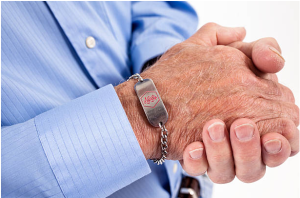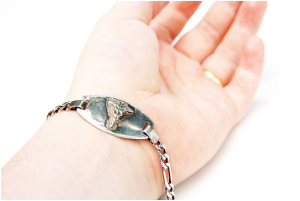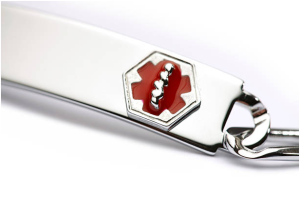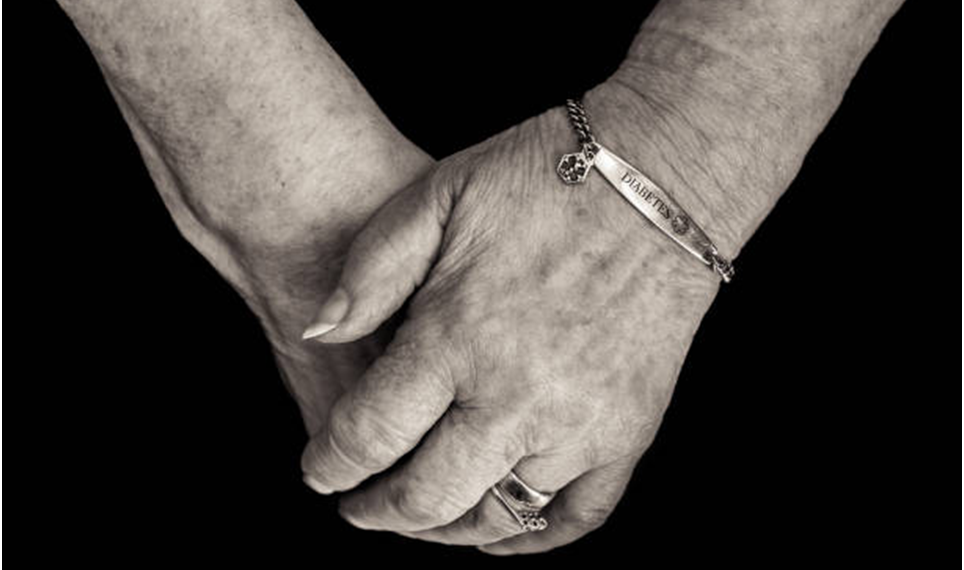Introduction
Choosing the right medical alert bracelet can be a life-saving decision. These wearable devices ensure that essential medical information is readily accessible during emergencies. For individuals with certain medical conditions, wearing a medical alert bracelet is crucial. People with conditions like diabetes, epilepsy, and severe allergies always benefit from quick identification of their needs. Throughout this guide, we will explore the types, features, and the best ways to select the right medical ID bracelet for you. If you’re new to this topic, it might help to review the CDC’s guide on personal health monitoring for additional context on medical alerts.
Understanding Medical Alert Bracelets

A medical alert bracelet is a wearable tag that provides critical health information about the wearer. This can include medical conditions, allergies, and emergency contacts. Here’s who might need one:
- Individuals with Chronic Illnesses or Allergies: Such as those with diabetes, heart conditions, or severe allergies to food or medication.
- Individuals with Cognitive Impairment: Such as dementia or Alzheimer’s.
- Epilepsy Patients: For quick medical assistance during seizures.
Medical alert bracelets have proved highly beneficial in emergencies. A study by the National Institutes of Health (NIH) highlights how health information can speed up emergency treatment, leading to quicker outcomes. They ensure that crucial medical information is immediately available to caregivers and medical professionals, which can significantly impact the quality of care received in critical situations.
Stay tuned as we delve into the features and types of medical ID bracelets to help guide your decision-making process.
Features to Look for in the Best Medical ID Bracelets

When it comes to selecting the best medical ID bracelets, it’s crucial to focus on the features that will meet your unique needs. Below are some key attributes to consider:
- Material Types: Choose between stainless steel, silicone, or leather. Each offers different benefits in terms of durability, comfort, and style.
- Engraving Options: Ensure your bracelet includes essential medical details. Look for options that offer clear, legible engraving, preferably laser-etched for durability.
- Technology Integration: Consider bracelets equipped with QR codes or NFC chips, allowing emergency responders quick access to your medical information.
- Customization: Choose styles and colors that suit your personal taste while ensuring medical details remain prominent.
Reflect on these questions to guide your selection:
- Is the bracelet waterproof?
- Is it comfortable for daily wear?
- Does it fit my personal style and lifestyle?
A Consumer Reports review of medical ID bracelets can provide insights and user experiences that may assist in making your decision.
Types of Medical ID Bracelets
Understanding the different types of medical bracelets can help you choose the one that best suits your needs. Here’s a breakdown of common options:
Traditional Medical ID Bracelets:
These are classic in style, focusing on durability and simplicity. They usually feature:
- Clear engraved information
- Sturdy materials like stainless steel
- Minimalist design, which might appeal if you’re after a straightforward option
Ideal for those who prioritize robustness and clear visibility of medical information.
Medical Bracelets with Technology Integration:
For tech-savvy individuals, bracelets with digital features can be a game-changer. They often include:
- QR Codes or NFC Chips: Provide immediate access to comprehensive medical records when scanned.
- Easy updating of medical information as conditions change.
Medical Watches and Strap Charms:
If you prefer a more discreet option, medical watches or strap charms might be right for you:
- Medical Watches: Integrate medical alerts with the functionality of a smartwatch.
- Watch Strap Charms: Offer a stylish way to carry vital medical info without wearing a separate bracelet.
By understanding the variety of medical ID bracelet types, you can make an informed decision that balances safety, style, and personal needs.
Personalized Options: Customizing Your Medical Alert Bracelet

Choosing a medical alert bracelet that reflects your personality while meeting your medical needs is essential. Customization gives you the power to create a bracelet that’s both practical and personal. Here’s how you can make it yours:
- Color Choice: Pick colors that suit your style. Many brands offer different shades, from subtle tones to vibrant hues.
- Fit and Comfort: Make sure the bracelet fits well and is comfortable for daily wear. Adjustable bands can help achieve the perfect fit.
- Engraving Details: Personalize the engraving with crucial medical information. Remember to prioritize clarity and legibility. Some people also like to add motivational quotes or a special name.
Benefits and Considerations:
- Benefits:
- Enhances personal connection
- Increases willingness to wear it regularly
- Potential Pitfalls:
- Over-customization can lead to cluttered information
- Some additions might be costly
Explore community feedback and experiences to discover creative ideas that others have tried.
How to Choose the Best Medical ID Bracelets for You
Selecting the right medical alert bracelet is vital for ensuring safety and peace of mind. Here’s a step-by-step guide to help you make the best choice:
1. Consider Your Lifestyle:
- Daily Activities: Think about your daily routine. Do you need a bracelet that’s waterproof or sweatproof?
- Comfort and Style: Choose a medical ID bracelet that you’ll wear comfortably every day, as consistent wear is key.
2. Evaluate Material and Features:
- Material Type: Pick a durable material that suits your skin (e.g., stainless steel, silicone).
- Tech Integration: Decide if you want features like QR codes or NFC chips for more detailed health information.
3. Budget Considerations:
- Set a Budget: Determine how much you are willing to spend.
- Explore Options: Consider both traditional and tech-integrated bracelets within your budget.
For more assistance, refer to resources like the Mayo Clinic’s buying guides for detailed insights on medical alert products.
Benefits of Wearing Medical ID Bracelets Daily
Wearing a medical alert bracelet every day provides numerous benefits, especially during emergencies:
Immediate Recognition of Medical Conditions:
- Quick Information Access: First responders can immediately identify your conditions and provide appropriate care. This quick access to information can even help reduce hospital visits.
- Personal Stories and Testimonials: Many individuals have shared heartwarming stories where their medical bracelet helped in emergencies. For instance, one diabetic woman’s bracelet informed paramedics of her condition and saved her from receiving incorrect treatment.
Support from Medical Professionals:
- Statistics: Data from emergency professionals highlight that medical alert bracelets often speed up diagnosis and treatment during crises.
Wearing your medical alert bracelet daily not only ensures your safety but also provides security for your loved ones.
Making the Most of Your Medical ID for Watch Band
If you prefer medical information on a watch band instead of a traditional bracelet, this option offers flexibility and style. Learn how to enhance this versatile alternative:
- Watch Band Choices: Many modern watches allow for interchangeable bands, making it easy to switch between different styles.
- Accessories: Add-ons like charms or strap features can denote medical conditions while adding flair.
- Maintenance Tips:
- Regularly clean the band to keep it hygienic
- Check for wear and tear to ensure durability
By customizing your medical alert solution, whether a bracelet or a watch band, you ensure that it meets personal needs while aligning with your lifestyle and fashion preferences.







